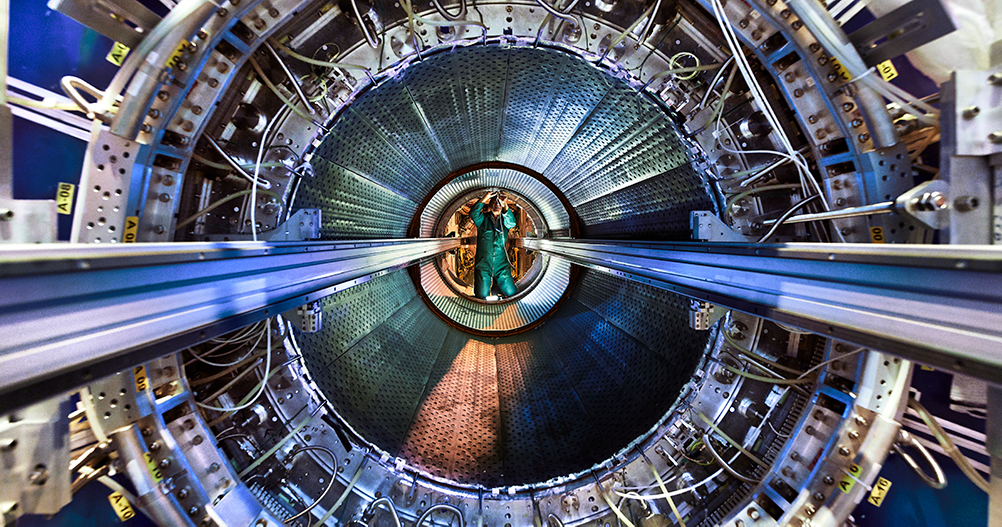
Charm and beauty quarks are excellent probes of the hot and dense state of deconfined quarks and gluons (quark–gluon plasma, QGP) which is created in high-energy heavy-ion collisions. These heavy quarks are produced in hard-scattering processes at the early stages of the collisions, and interact with the constituents of the newly created QGP through both elastic and inelastic processes. These quarks, which can be studied through their decays into leptons, lose energy while propagating through the QGP medium. Consequently, different production yields are observed at large momenta in nucleus–nucleus collisions compared to proton–proton collisions. This effect can be quantified using the nuclear modification factor, RAA, which is the ratio of nucleus–nucleus and proton–proton particle yields, scaled by the average number of binary nucleon–nucleon collisions. Comparing measurements in different collision systems sheds light on heavy-quark energy-loss mechanisms, and provides high-precision tomography of the QGP.
The results show that collision geometry plays an important role in heavy-quark energy loss
A new analysis by the ALICE collaboration compares the production of leptons from heavy-flavour hadron decays in Pb–Pb and Xe–Xe collisions at √sNN = 5.02 and 5.44 TeV, respectively. The measurements use the muon and electron decay channels at forward rapidity and mid-rapidity. The results show that collision geometry plays an important role in heavy-quark energy loss.
Remarkable agreement
A remarkable agreement is observed between the muon yields in head-on Xe–Xe collisions and slightly offset Pb–Pb collisions (figure 1, left). Given the larger size of the lead nucleus, these collision centrality classes – 0–10% and 10–20%, respectively – give rise to similar charged-particle multiplicities, and thus suggest the creation of similar QGP densities and sizes in the colliding systems.
In both cases, the production of muons from heavy-flavour hadron decays is suppressed up to a factor of about 2.5 for 5 GeV < pT < 6 GeV. This suppression is successfully reproduced by the MC@sHQ+EPOS2 model, which considers both elastic and inelastic energy-loss processes of the heavy quarks in the QGP, but is underestimated by the PHSD model, which only includes elastic processes. The analysis also saw ALICE’s first sensitivity down to pT = 0.2 GeV using a lower magnetic field (0.2 T) in the solenoid magnet (figure 1, right). The suppression pattern for muons and electrons from heavy-flavour hadron decays is similar at both forward and mid-rapidity, indicating that heavy quarks strongly interact with the medium over a wide rapidity interval. The suppression is smaller in these “glancing” semi-central collisions than in the previously discussed head-on collisions. This is compatible with the hypothesis that the in-medium energy loss depends on the energy density and on the size of the system created in the collision.
The precision of the measurements brings new insights into the nature of parton energy loss and new constraints to the modelling of its dependence on the size of the QGP medium in transport-model calculations. Further constraints will be set by future higher precision measurements during Run 3, when ALICE will measure leptons from charm and beauty decays separately, at both central and forward rapidity. A short run with the much smaller oxygen–oxygen system may also be scheduled and contribute to a deeper understanding of the dependence of system size on in-medium energy loss for heavy quarks.
Further reading
ALICE Collab. 2020 arXiv:2011.05718.
ALICE Collab. 2020 arXiv:2011.06970.






